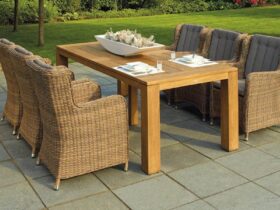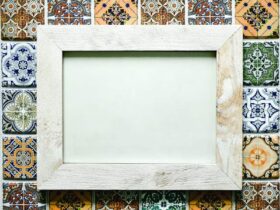Slate in construction is a highly durable material used for roofing, flooring, and blackboards. It is known for its resistance to water and fire, making it a popular choice for various applications.
Slate is a metamorphic rock derived from clay or volcanic ash, and it comes in a variety of colors, adding to its aesthetic appeal. Its natural aesthetic provides homes with a classic look that fits in almost any neighborhood. Additionally, slate has a low tendency to absorb water, making it resistant to frost damage and breakage due to freezing.
Due to its durability and versatility, slate is a preferred building material for both interior and exterior applications, such as flooring, stairs, walkways, and wall cladding.
Slate: The Quintessence Of Natural Elegance
When it comes to construction materials, slate stands out as the quintessence of natural elegance. With its timeless beauty and durability, slate has been a popular choice among builders for centuries. Its unique characteristics make it a versatile material that can be used in various applications, from roofing to flooring.
Colors And Textures
One of the remarkable features of slate is its wide range of colors and textures. While it is commonly associated with shades of grey, slate can also be found in hues of purple, green, and even cyan. Each locality produces its own distinct color variations, adding a touch of uniqueness to every project.
Furthermore, slate’s texture adds to its visual appeal. The natural splitting, or foliation, of slate creates a surface that is both smooth and rugged, giving it a unique character that cannot be replicated by any other material.
Historical Significance
Slate holds a significant place in history, being used for centuries in various civilizations. Its longevity is a testament to its durability, making it a preferred choice for historical landmarks and heritage buildings. From ancient castles to historic cathedrals, slate has proven its ability to withstand the test of time.
In addition to its historical significance, slate also carries a sense of tradition and authenticity. When used in construction, it can evoke a sense of nostalgia and elegance, adding a touch of timeless beauty to any structure.
Overall, slate’s natural elegance, diverse colors, and rich historical significance make it a prized material in the construction industry. Whether it’s for roofing, flooring, or any other application, slate brings a touch of sophistication and durability that is unmatched by any other material.
Geological Origins Of Slate
Slate, a metamorphic rock derived from clay or volcanic ash, is a popular choice in construction due to its durability and resistance to water and fire. It is often used for roofing, flooring, blackboards, and as a building material for both interior and exterior applications.
Its natural aesthetic provides a classic look for homes and buildings.
From Shale To Slate
Slate is a metamorphic rock that originates from shale, a sedimentary rock composed of clay minerals. Shale is subjected to high heat and pressure over millions of years, causing the minerals to recrystallize and form slate. The process of metamorphism involves the rearrangement of minerals within the rock, resulting in a more compact and dense texture.
Unique Properties
One of the unique properties of slate is its ability to split into thin sheets, making it an ideal material for roofing, flooring, and wall cladding. Additionally, slate is highly durable and resistant to both water and fire, making it a popular choice for construction projects.
Slate comes in a variety of colors, ranging from grey to purple, green, or cyan. This wide range of colors makes it a versatile material for both interior and exterior design. Its low tendency to absorb water makes it resistant to frost damage and breakage due to freezing, making it a long-lasting and reliable building material.
In conclusion, slate is a highly desirable material in the construction industry due to its unique properties and durability. From shale to slate, the geological origins of this metamorphic rock have resulted in a material that can withstand the test of time.
Key Uses In Construction
Slate is a versatile material that has been utilized in construction for centuries due to its durability and resistance to water and fire. In the modern construction industry, slate continues to be a popular choice for various applications, offering both functional and aesthetic benefits.
Roofing And Flooring
Slate roofing is a prominent application in construction, known for its longevity and elegant appearance. It provides excellent protection against the elements and adds a touch of sophistication to any structure. On the other hand, slate flooring is valued for its durability, low maintenance, and natural beauty. Whether used indoors or outdoors, slate flooring enhances the visual appeal of spaces while standing the test of time.
Interior And Exterior Applications
In interior applications, slate is commonly employed for features such as countertops, backsplashes, and fireplace surrounds, adding a touch of luxury and charm to residential and commercial spaces. Exterior applications of slate include cladding, paving, and landscaping elements. Its weather-resistant properties make it an ideal choice for enhancing the exterior aesthetics of buildings and outdoor areas.

Credit: hdgbuildingmaterials.com
Durability And Resistance
Slate is a popular construction material known for its exceptional durability and resistance.
Weather And Fire Resilience
Slate is highly weather-resistant, protecting buildings from harsh elements.
- Waterproof nature shields against moisture infiltration.
- Fire-resistant properties enhance safety and protection.
Longevity And Maintenance
Slate’s longevity surpasses many other building materials.
- Long-lasting durability reduces the need for frequent replacements.
- Minimal maintenance requirements contribute to cost-effectiveness.
Slate In Modern Architecture
Slate is a natural stone that has been used in construction for centuries. Its unique properties, such as durability and resistance to water and fire, make it a popular choice among builders. In modern architecture, slate continues to be valued for its timeless beauty and versatility.
Blending Tradition And Innovation
In modern architecture, slate plays a crucial role in blending tradition and innovation. While slate has been used for centuries in traditional building techniques, it is now being incorporated into contemporary designs to create visually stunning structures.
Architects and designers are exploring new ways to use slate, pushing the boundaries of what was once considered a conventional material. By combining slate with other modern building materials, such as glass or steel, they are able to achieve a harmonious balance between old and new.
Case Studies
Let’s take a look at some fascinating case studies that demonstrate the use of slate in modern architecture:
- The Guggenheim Museum Bilbao: This iconic museum in Spain features a stunning exterior made of titanium and glass, with slate accents. The use of slate adds a touch of elegance and connects the building to its surroundings.
- The High Line Park: Located in New York City, the High Line Park incorporates slate in its landscape design. Slate paving stones are used to create walkways and seating areas, adding a natural and durable element to the urban environment.
- The Oslo Opera House: This architectural masterpiece in Norway showcases the use of slate on its roof. The dark gray slate tiles create a dramatic contrast against the white marble facade, giving the building a distinctive and sophisticated look.
These case studies demonstrate how slate can be used in innovative ways to enhance the visual appeal and functionality of modern architectural designs.
Choosing Slate For Your Project
Slate is a popular choice in construction due to its exceptional durability and resistance to water and fire. It is often used for roofing, flooring, and blackboards, and comes in a variety of colors, making it a versatile option for various projects.
If you’re considering slate for your construction project, there are a few important factors to keep in mind. Slate is a highly durable and long-lasting material that is resistant to water and fire, making it an excellent choice for a wide range of applications, from roofing to flooring to wall cladding. Here are some key considerations to keep in mind when choosing slate for your project:
Quality And Sourcing
When selecting slate for your project, it’s important to consider the quality of the material and where it comes from. High-quality slate will be more durable and long-lasting than lower-quality options, so it’s worth investing in a premium product if you can afford it. Additionally, you’ll want to ensure that the slate you choose is responsibly sourced and meets environmental and ethical standards.
Cost Considerations
Slate can be more expensive than other construction materials, so it’s important to factor in the cost when making your decision. However, it’s worth noting that while slate may have a higher upfront cost, it can actually be more cost-effective in the long run due to its durability and longevity. Additionally, slate can add value to your property, making it a worthwhile investment.
In conclusion, when choosing slate for your construction project, it’s important to consider factors such as quality, sourcing, and cost. By taking these factors into account, you can ensure that you select the best slate for your needs and create a beautiful and long-lasting finished product.
Frequently Asked Questions
Why Do Builders Use Slate?
Builders use slate because it is highly durable and resistant to water and fire. It lasts longer than other materials, making it a smart investment. Slate is also available in a variety of colors and can be used for roofing, flooring, and even as a decorative stone.
What Is The Purpose Of Slate?
Builders use slate for its durability and resistance to water and fire. It is commonly used in electrical panels, laboratory tabletops, roofing, flooring, blackboards, and composition roofing. Slate comes in various colors and adds a classic aesthetic to homes. It is also used for interior and exterior flooring, stairs, walkways, and wall cladding due to its resistance to frost damage.
What Does Slate Look Like?
Slate is often grey but can come in various colors like purple, green, or cyan. It’s a metamorphic rock used for roofing, flooring, blackboards, and more in construction.
What Is Slate On A House?
Slate on a house is made from metamorphic rocks and is used for roofing. Its natural aesthetic provides a classic look that fits in any neighborhood. Slate is durable, fire-resistant, and long-lasting, making it a popular choice for roofs.
Why Do Builders Use Slate?
Slate is popular for its durability, water and fire resistance, and long-lasting nature, making it a valuable construction material.
Conclusion
Slate is a highly sought-after material in construction due to its durability and resistance to water and fire. Its longevity and natural aesthetic make it a popular choice despite being more expensive. Slate’s versatility in various applications further adds to its appeal in the construction industry.









Leave a Reply